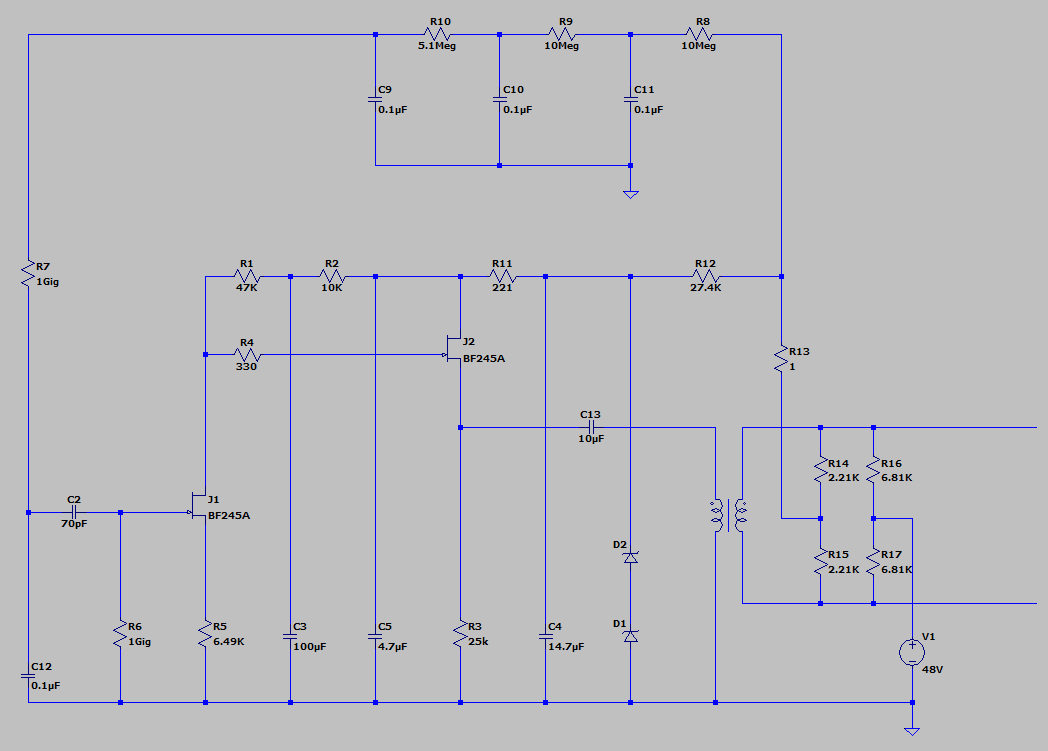Gus said:Some Sterling/groove tubes solid state microphone use a 200 ohm series resistor after an emitter follower before the transformer.
The 200 ohm resistor is for better phase linearity at both ends of the spectrum, it also extends the HF response. These microphones handle high SPL with no problem. Edcor nickel core 1:5 tranny connected backwards of course gets the job done. Only one cap in the audio path and polypropylene. No electrolytics are used anywhere.
















![Electronics Soldering Iron Kit, [Upgraded] Soldering Iron 110V 90W LCD Digital Portable Soldering Kit 180-480℃(356-896℉), Welding Tool with ON/OFF Switch, Auto-sleep, Thermostatic Design](https://m.media-amazon.com/images/I/41gRDnlyfJS._SL500_.jpg)

















